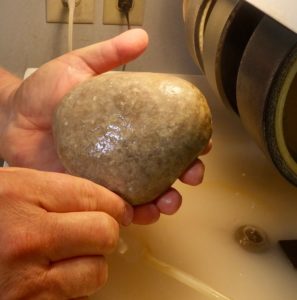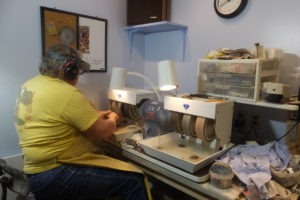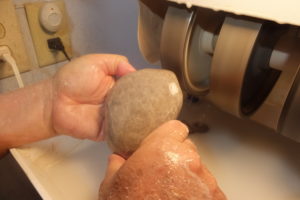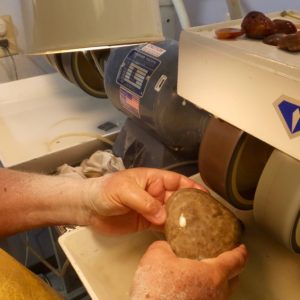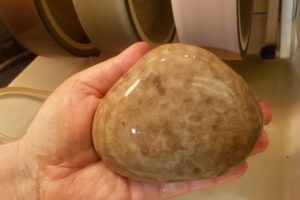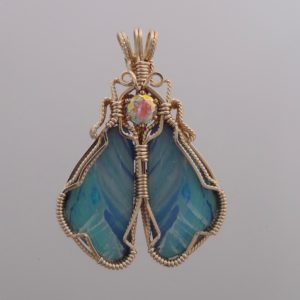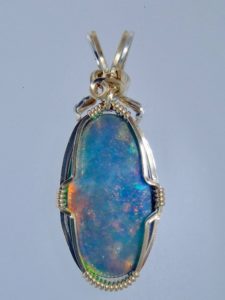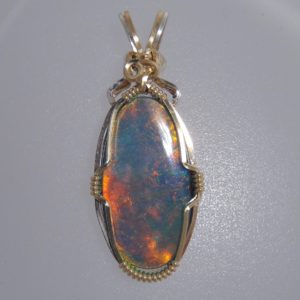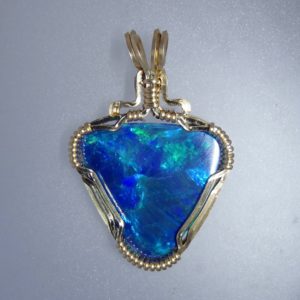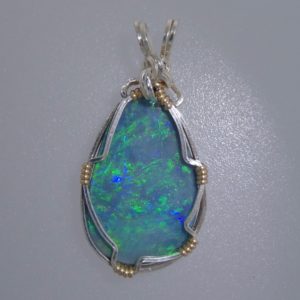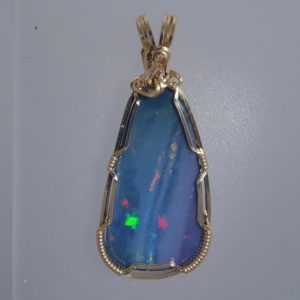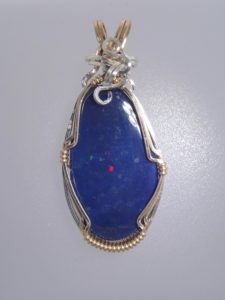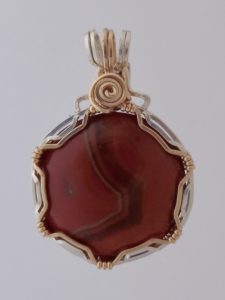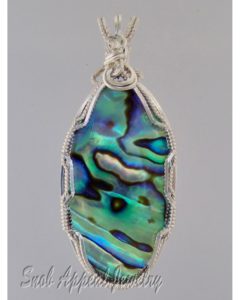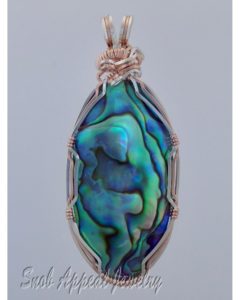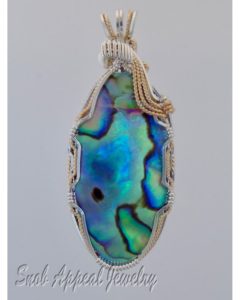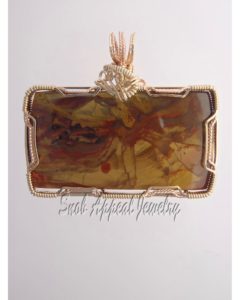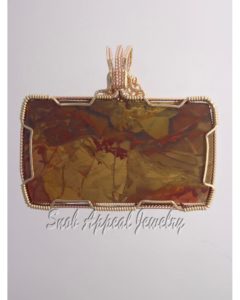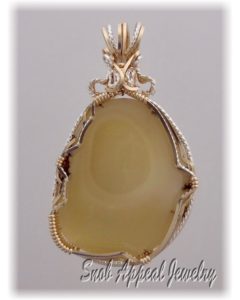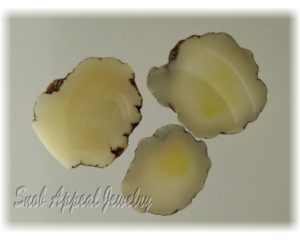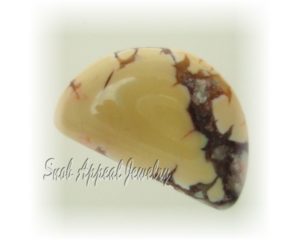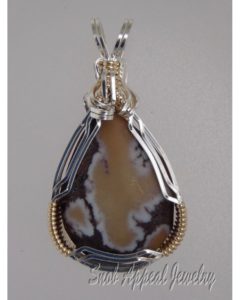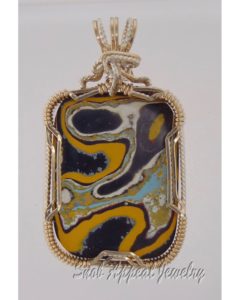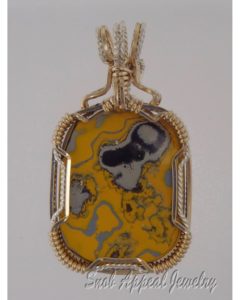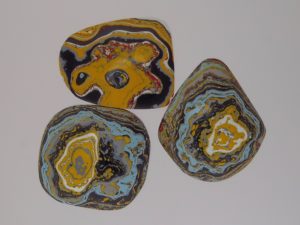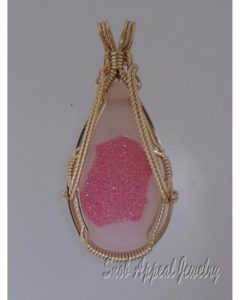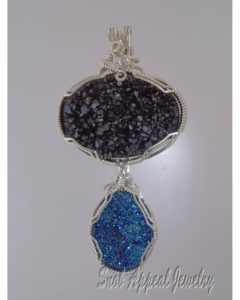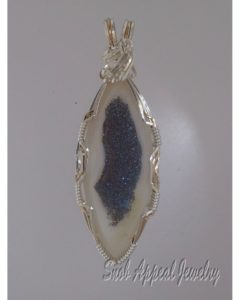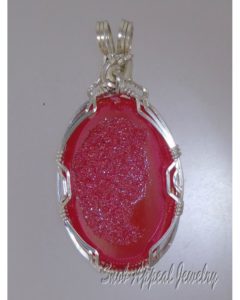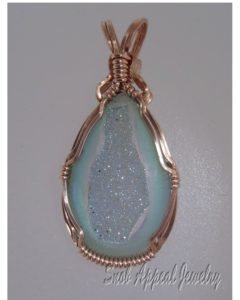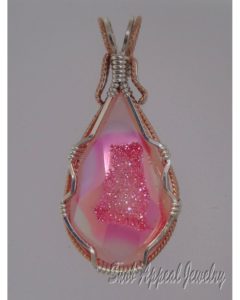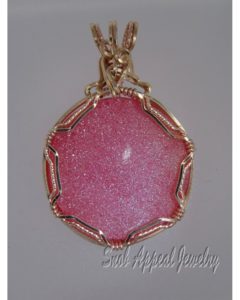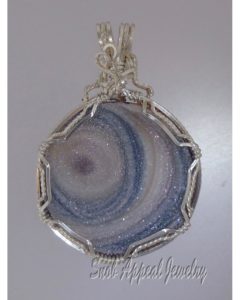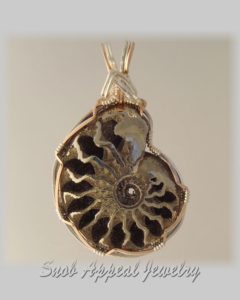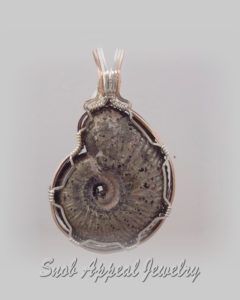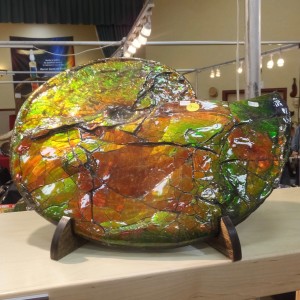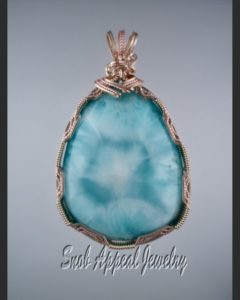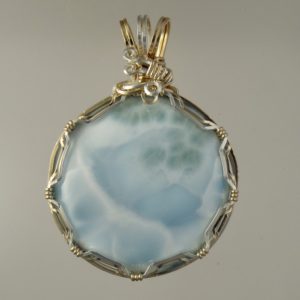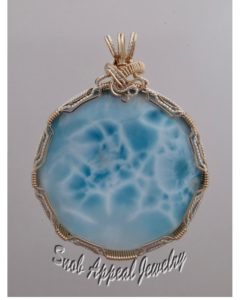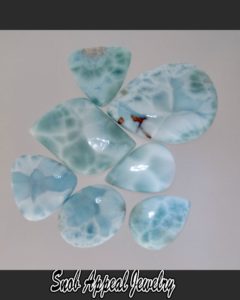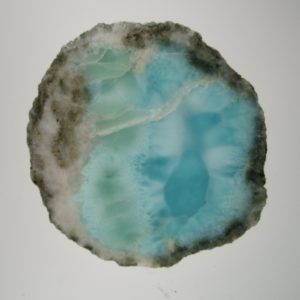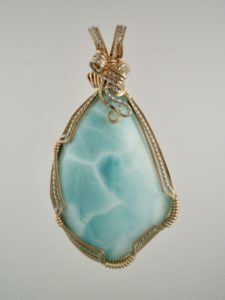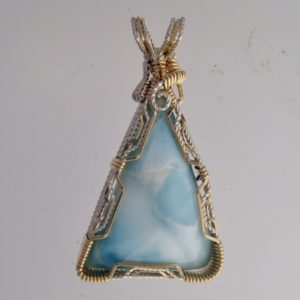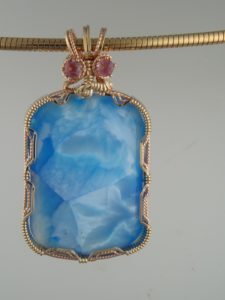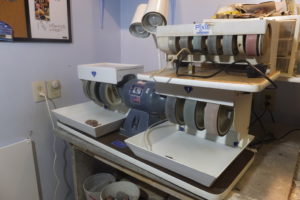
The Diamond Pacific Titan is big and bold. The Pixie (on top) that I take in my RV is a dwarf compared to its “daddy.”
People who have seen my shop will agree that it is pretty well equipped. I was able to cut and polish about any rock, but two things I was not able to do was cut and polish big Petoskey Stone.. I’ve solved this issue with a new machine I found in Tucson.
I own three cabochon machines; the Popular, six wheeled, Diamond Pacific Genie, a seven wheeled Diamond Pacific X-pert, and a Pixie. These machines have limits as to how big a stone you can polish. It has always been difficult to polish that large Petoskey Stone due to the wheels on these machines being close together. The six inch wheels on these machines have their limitations also (the pixie has 4″ wheels).
My dream machine has always been Diamond Pacific’s monster machine, the Titan. It has 8″ wheels, a 3/4 HP motor (Compaired to 6″ wheels and 1/4 HP for the aforementioned machines). Those large Petoskey Stones are no longer out of reach with my Titan. The story of the Titan’s acquisition is interesting.
With credit card in pocket, on the first day of the Tucson Gem Shows, we headed out to the Kino Sports Complex, where Diamond Pacific has their display and sales. But first, we decided to stop in and have a look at the 22nd Street Show.
While having a preliminary look around the show, Bonnie and I separate. Different things interest her than me, so the usual procedure is to set a back and forth pattern so we have some idea where each other may be. The 22nd street show tent is about 1/8 mile from end to end, so things can be missed. Bonnie caught up to me near the end of my 1/2 mile walk (back and forth four times). She ask if I saw the display that a couple had that were going out of the rock business. She said they had some rocks they were clearing out. ROCKS? I’m there.
Upon arrival at this booth I missed, I noticed many 8″ grinding wheels. What takes 8″ wheels? Correct, the Titan. I also noticed a small sign for a used Titan for sale. The elderly gentleman was a Diamind Pacific Dealer, and due to health reasons, was getting out of the rock business. It didn’t take me long to strike a deal after looking at his machine out in his SUV. Since these machines are almost indestructible, a used one is usually as good as a new one, except new wheels are sometimes needed. Since he had new grinding wheels, I bought a new set.
The Titan is a monster 16″ wide, 42″ long, weighing in excess of 130#. We had to come back the next day and pick it up, after clearing the back of our Tracker. The machine fit in the tracker with less than an inch on either side. Fortunately our daughter lives in Tucson and kindly loaned us a space in the garage for storage. Happy me! The Titan rode back to Michigan in the back of the towed Tracker.
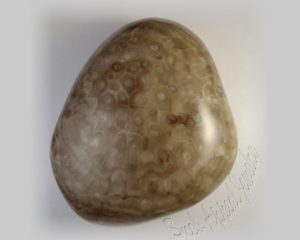
The lights in the shop really make the colors odd, but in the studio lighting the true colors and patterns appear.
The Titan, as mentioned, is capable of polishing those larger Petoskey Stones. I set the machine up and tested its mettle by polishing a 4″ X 5″ Petoskey stone. I show you the grinding procedure that took about a third of the time as the Genie; really amazing.
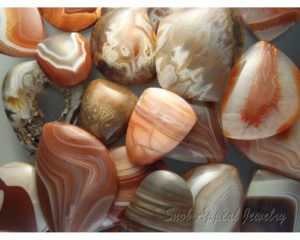
First cabs cut on the Titan
I also took some Lakers from rough to cabochons to test the Titan on smaller projects. I thought “why did I wait so long to get one of these?” Everything is so much easier and faster with better results. Now the possibilities have expanded. I eagerly look forward to going to “work” each day.








